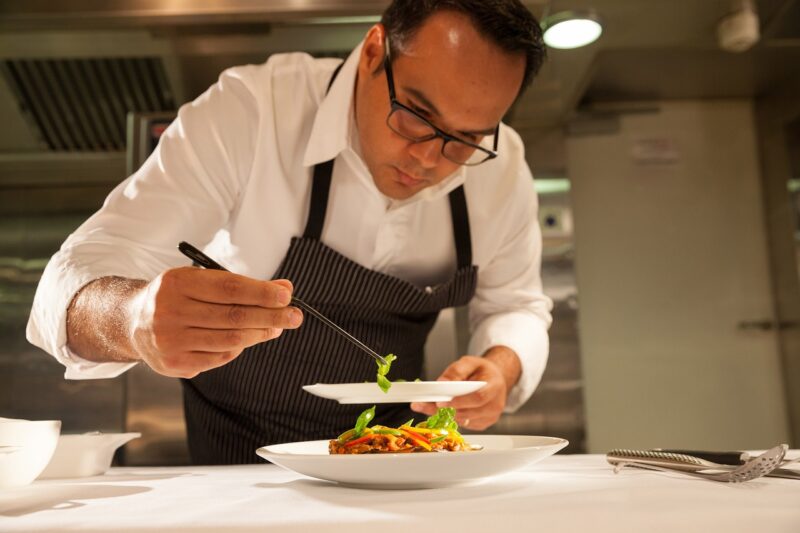The Dark Side of the Gourmet World: When Fine Dining Becomes Too Strange
November 13, 2024

Fine dining is often celebrated for its exquisite dishes, meticulous presentation, and unparalleled service. However, this culinary art form can also delve into bizarre and outlandish territories that leave diners questioning the sanity of gastronomic experimentation. From dishes that challenge our perceptions of food to methods that raise ethical concerns, the gourmet world is not without its dark side.
1. The Allure of the Unconventional
The world of fine dining thrives on creativity and innovation. Chefs are often driven by a passion to push culinary boundaries, resulting in dishes that deliver not just on taste but also on shock value. The rise of molecular gastronomy has seen chefs using science to create unexpected textures and flavors, such as edible balloons or dishes that bubble and smoke.
While many diners embrace these novel experiences, others are left bewildered. The question arises: when does creativity cross the line into absurdity? Consider the infamous “black ice cream,” made from activated charcoal. Initially a trendy Instagram post, its inclusion on dessert menus raised health concerns about the safety and effects of consuming activated charcoal.
2. Ethical Implications of Exotic Ingredients
In a quest to stand out, some fine dining establishments have begun using increasingly exotic and rare ingredients, such as whale meat, baby eels, and even certain types of endangered fish. The ethical ramifications of these choices are profound, raising questions about sustainability and animal rights.
Many chefs assert that sourcing these ingredients is a part of preserving traditional dishes; however, this argument is met with scrutiny. The challenge is to balance cultural heritage with ethical sourcing. Fine dining can inadvertently endorse the exploitation of vulnerable wildlife under the guise of culinary artistry.
3. The Starvation Diet Phenomenon
Alongside bizarre dishes, some fine dining experiences are criticized for their portion sizes. The rise of the so-called “starvation diet” in high-end restaurants features tiny portions intended as art rather than sustenance. Diners leave feeling unsatisfied, often having paid a hefty sum for their meal.
Plated masterpieces can lead to feelings of inadequacy; diners feel compelled to enjoy the experience but may end up hungry. This contradiction poses the question: is fine dining losing its primary function of nourishment in favor of spectacle?
4. The Precarious Position of Culinary Artists
The pressures placed on chefs within high-end dining contexts can lead to toxic environments. As expectations for creativity and success heighten, many culinary artists face burnout, depression, and addiction.
In 2020, celebrity chef Anthony Bourdain’s tragic demise opened the floodgates on the topic of mental health within the culinary world. More chefs admitted to struggles with substance abuse, anxiety, and the pressure to constantly innovate. When the focus shifts from creating joyful dining experiences to maintaining a veneer of perfection, the costs can be devastating.
5. Snobbery and Elitism in Fine Dining
Dining at elite restaurants often comes with an unspoken code of conduct dictating the “correct” way to enjoy fine food. This snobbery can alienate those who seek a genuine experience rather than fitting into a mold.
The concept of “gourmet” may become synonymous with arrogance, as diners engage in a ritual of one-upmanship, discussing rare ingredients, exclusive wine pairings, or elaborate preparation methods instead of simply enjoying the meal. This atmosphere makes fine dining a battleground for elitism rather than an inclusive exploration of flavors and culture.
6. Conclusion: Finding Balance in Fine Dining
The gourmet world undoubtedly possesses a sense of mystique and allure, but it also bears the weight of responsibility. The challenge lies in striking a balance between culinary innovation and ethical considerations, ensuring that the excitement of fine dining doesn’t come at a cost to sustainability, personal well-being, or genuine enjoyment.
As diners, it’s essential to ask ourselves whether the avant-garde experience being marketed is genuinely desirable or simply a marketing gimmick dressed as art. Through thoughtful consumption and a willingness to support ethical dining practices, we can help shape a culinary landscape that celebrates both creativity and responsibility, making the gourmet world a truly inclusive and enriching experience for all.
Next time you find yourself perusing a gourmet menu, take a moment to reflect—are these dishes redefining dining or simply pushing us toward the absurd?








